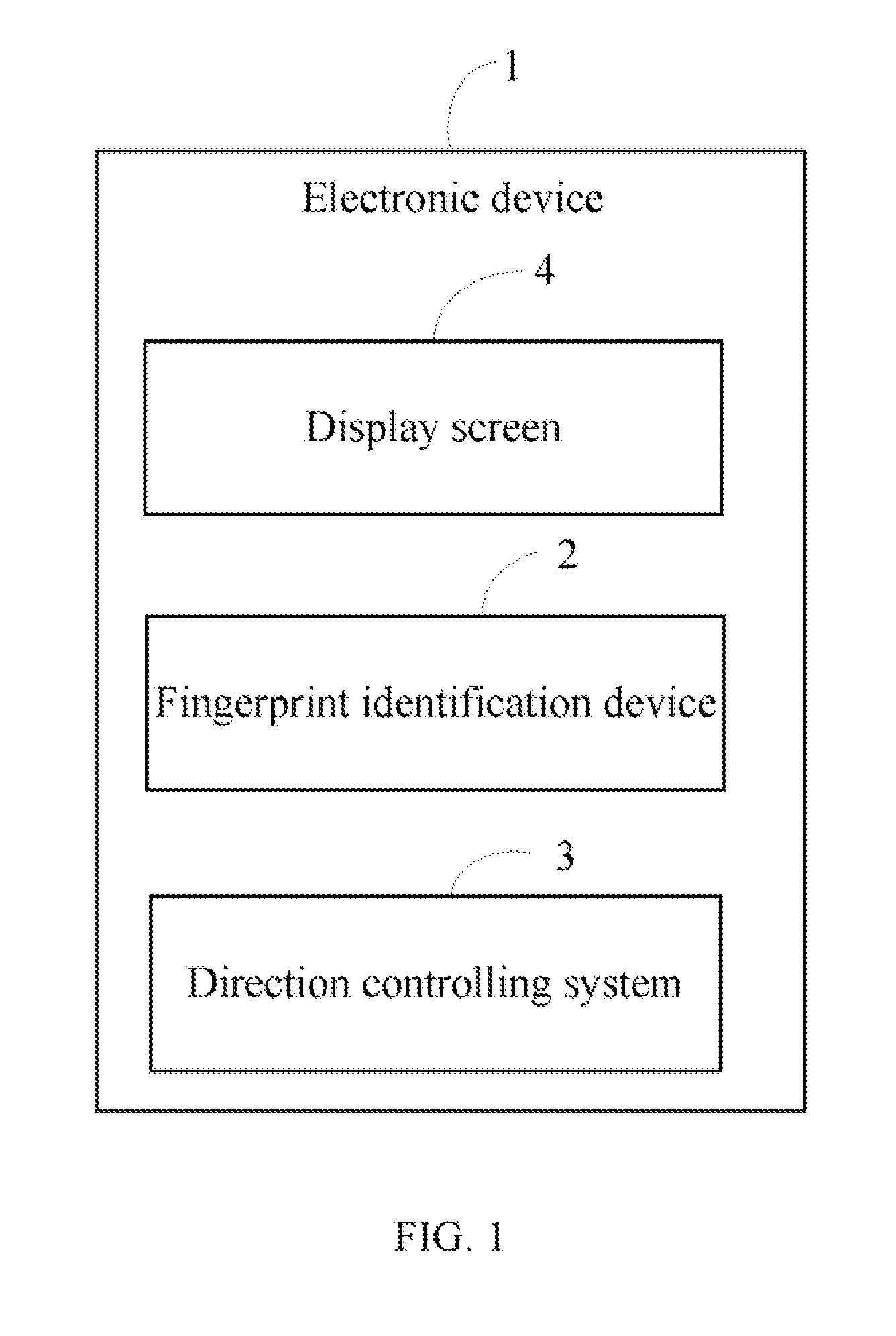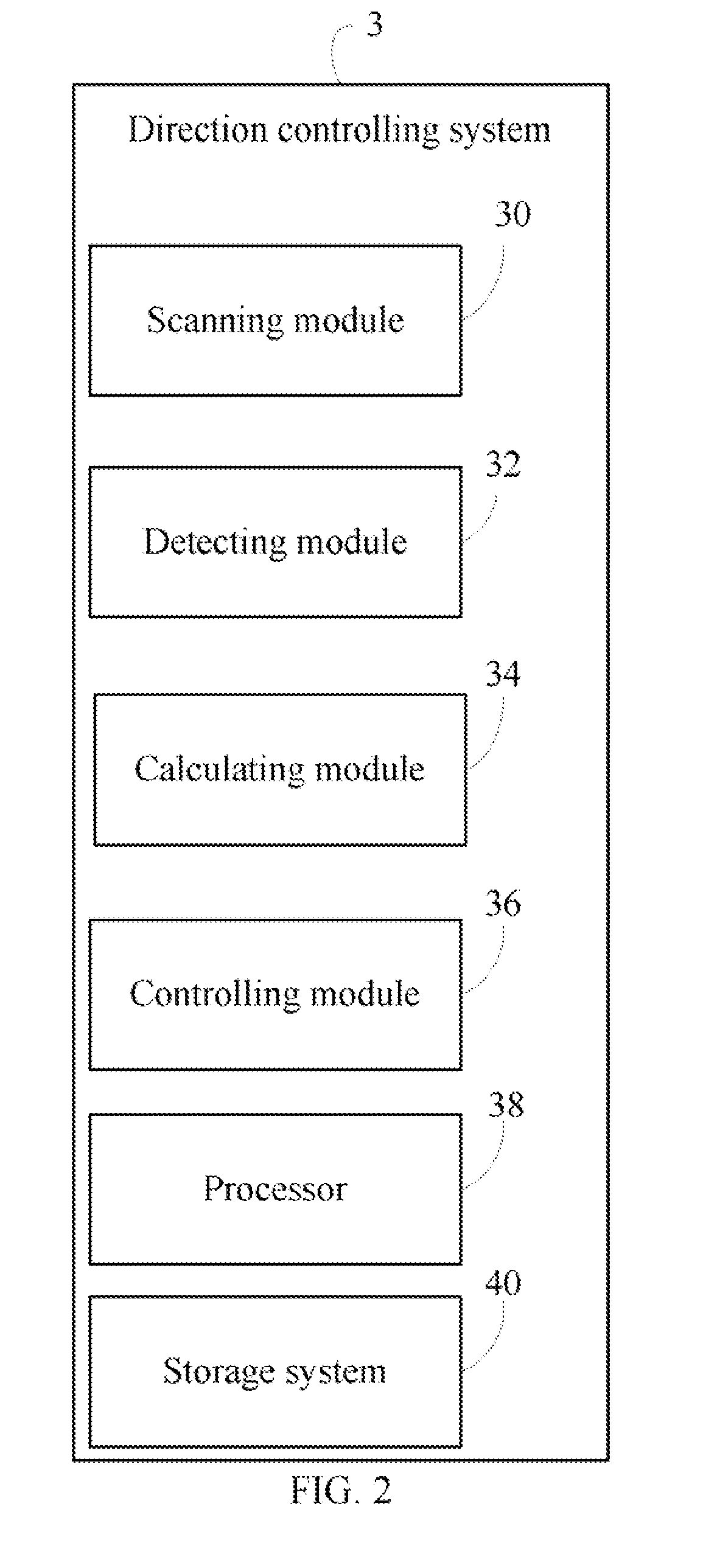Direction controlling system and method of an electronic device
- Summary
- Abstract
- Description
- Claims
- Application Information
AI Technical Summary
Benefits of technology
Problems solved by technology
Method used
Image
Examples
Embodiment Construction
[0012]All of the processes described below may be embodied in, and fully automated via, functional modules executed by one or more general purpose processors. The functional modules may be stored in any type of computer-readable medium or other computer storage device. Some or all of the methods may alternatively be embodied in specialized computer hardware or communication apparatus.
[0013]FIG. 1 is a block diagram of one embodiment of a direction controlling system 3 of an electronic device 1. The direction controlling system 3 is for controlling operation of the electronic device 1. In one embodiment, the electronic device 1 may be a mobile phone, or a notebook. The electronic device 1 includes a fingerprint identification device 2, and a display screen 4. In one embodiment, the identification device 2 may be a touch screen, so a finger should move on the identification device 2.
[0014]In one example, the current icon displayed on the display screen 4 is “phone book”. If a user wan...
PUM
 Login to View More
Login to View More Abstract
Description
Claims
Application Information
 Login to View More
Login to View More - R&D
- Intellectual Property
- Life Sciences
- Materials
- Tech Scout
- Unparalleled Data Quality
- Higher Quality Content
- 60% Fewer Hallucinations
Browse by: Latest US Patents, China's latest patents, Technical Efficacy Thesaurus, Application Domain, Technology Topic, Popular Technical Reports.
© 2025 PatSnap. All rights reserved.Legal|Privacy policy|Modern Slavery Act Transparency Statement|Sitemap|About US| Contact US: help@patsnap.com



